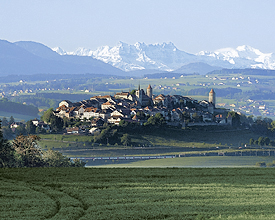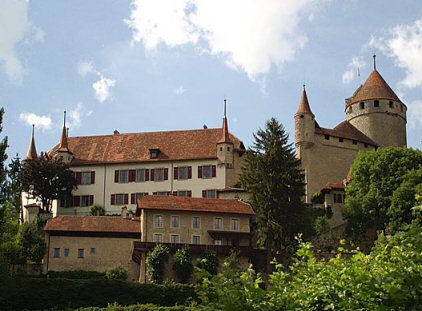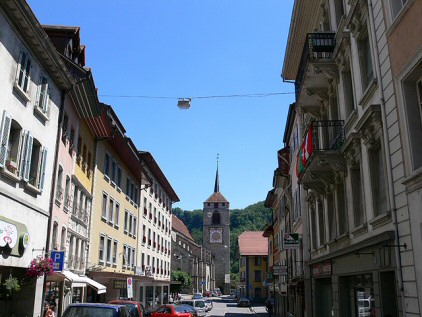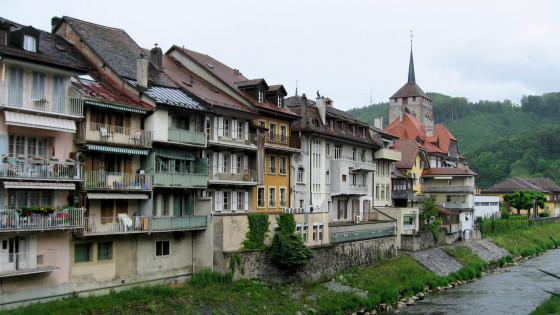
Romont can look this beautiful.
We experience it a little more gloomy. But despite the dark cloud in the weather forecast, it is not raining! What more could you expect.
Soon we reach the small chapel of St. Bernard. It was built in 1653.
Bernard of Menthon founded the monastery on the pass, which is named after him today, around 1050 (or 962 ?) to protect pilgrims. A few years later he probably also built the hospice on the little St. Bernhard. He is the patron saint of mountaineers and skiers.
We ascend to 809 m and cross the border to the canton of Vaud. While Otto tells us the history of Vaud, rain clouds pass over Lucens and disappear again.

Lucens (photo from the Lucens website) belonged to the bishops of Lausanne since the 10th century. On the site of the present château, there was probably already a castle-like complex in Burgundian times, which was extended in the 11th and 12th centuries. It was only with the further expansion and the transfer of the bishop's residence from Curtilles to Lucens in the 13th century that the importance of the site increased. From then on, Lucens was the summer residence of the bishops of Lausanne. The castle was set on fire by the Confederates in 1476 during the Burgundian Wars, but was later rebuilt.
Major alterations and extensions took place in the middle of the 16th century, when the castle was chosen as the bailiff's seat. The oldest parts dating from the Middle Ages are the 13th century keep, which is round in the Savoy style and 26 metres high, and its adjacent buildings and walls. The irregular palace with oriel towers and a double curtain wall was built during the Bernese period. The castle became the property of the canton in 1798, but was sold by the canton in 1803 and has changed hands several times since then.
On the way down into the Broye valley we reach the hamlet of Lovatens.
Group picture in Lovatens. It is always reassuring to see a signpost with the "4".
Soon Curtilles is reached with its Notre-Dame church from the middle of the 11th century.
Time for a lunch break under the canopy.
The simple bell tower is interesting, and its shape is rarely found in the Vaud region.
We got ourselves the key and here we listen to Otto's explanations.
Worth seeing are art-historically valuable glass paintings dating from around 1500.
On the side walls ancient frescos are more or less well preserved.
A light continuous rain has started. With good rain gear we walk from Curtilles through meadows and fields back to the Broye. From there a nice dirt road leads along the river to Moudon.
Moudon is reached!
The picturesque image of the lower town is dominated by the early Gothic parish church of St. Etienne from the 13th century.

Inside the imposing building houses valuable choir stalls from the beginning of the 16th century. A chapel of St. James built in 1345 was later removed, except for two paintings on pillars. The figure of the apostle remained in paintings on these two pillars and a wooden relief including a shell in the choir stalls.
One side of the choir stalls

The beautiful old town with many historic buildings is located on the left side of the river Broye.
Worth seeing besides the whole townscape are especially the castles Tour de Broye from the 12th century. Rochefort from the end of the 16th century and Billens from the 17th century.
Here in the former "Spital" (Johanniter house) was once a hostel for pilgrims.

City on the Broye

